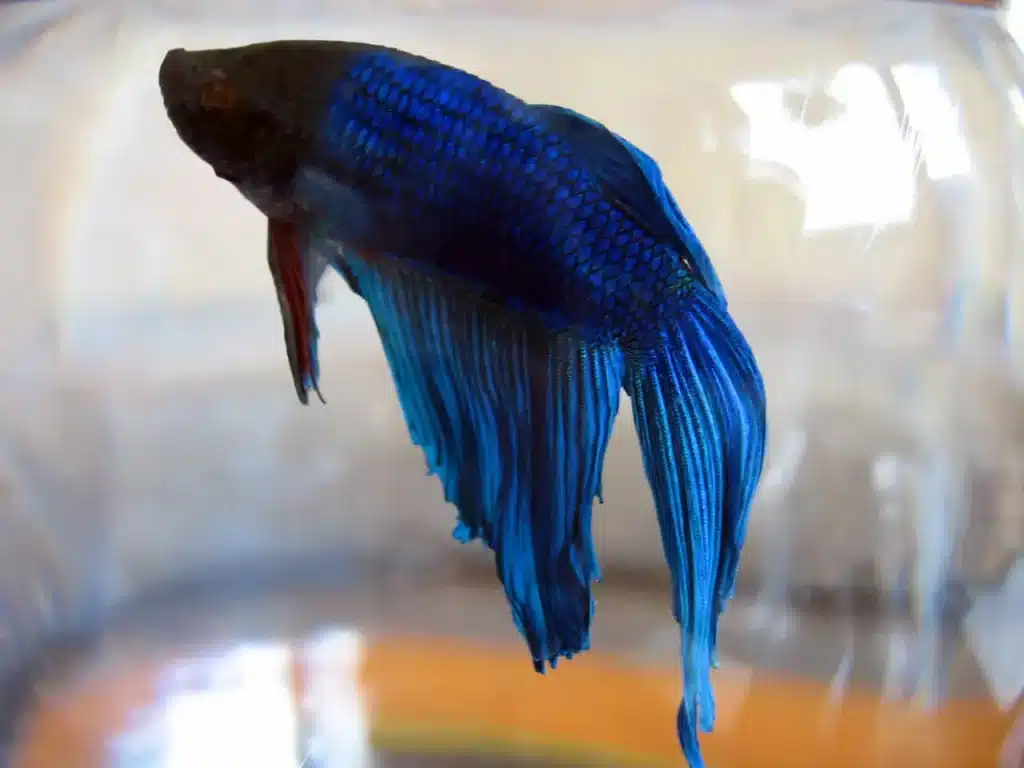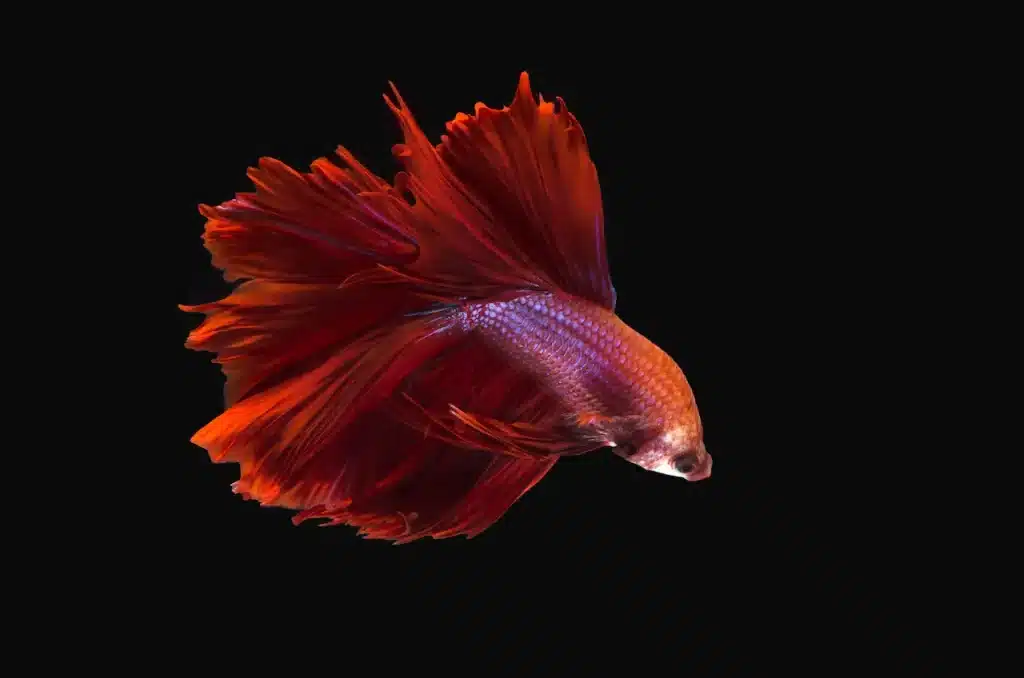Can You Keep Betta Fish in A Vase & Keep Them Healthy?
Can you keep Bettas in Vases ? Yes you can! Do you need to keep Bettas inside vases or bowls? Yes. But only if they have enough room and a consistently high quality of water. You want your Betta to enjoy living in a bowl or vase so you can also enjoy its beauty for many years.
Keep them in vases and add plants to the top of it for extra oxygen.
Bettas are a popular choice for aspiring fish keepers. This is due to Bettas being beautiful and the fact that local fish shops often display them in small containers or bowls without any decor.
This article will teach you how to properly care for Bettas . We will cover the preferred parameters for their water, as well as diet and beginner-friendly pet Betta plant recommendations. We’ll also show you the best way to maintain a Betta plant in a vase, without compromising their health or happiness.
Table of Contents
Toggle
Can Betta Fish Live in a Vase?
In short:
Technically, yes, you can keep your betta in a vase. However, there are some precautions that must be taken. Choose the biggest vase possible, add plants to the environment and change the water frequently.
How to Care for Betta Fish in Vase
You can now begin to understand on how to properly care for Bettas when they are in vases, fishbowls or other containers. You can learn how to care for Betta Fish properly in vases and bowls by reading on.
Find the largest vase you can find
the biggest vase you can find is the most humane way to raise Bettas. The larger vase will allow them to have more room to swim and use more oxygen.
How big a vase is required for one Betta? If you can find a 3 gallon minimum vase capacity, then that’s a good start. If you can find a 5 gallon vase, it would be better. larger is better if you’re looking for vases and bowls that will house Bettas humanely.
Change the water regularly
If you are going to keep Bettas in a bowl or vase, you will need to change the water every week . You should change the water in non-filtered containers regularly because they are more prone to waste and nitrogen buildup. To ensure that your Betta is in a healthy environment, you should aim for a water change of at least 40-50 percent.
Remember to slowly change the water in your Betta bowl or vase. Pour out the old water and slowly pour in fresh water.
Maintain the pH of your water between 6.5 and 7.5, or 3 to 4 dGH. Your Betta’s should only have a temperature between 75 and 80 degrees Fahrenheit. Place the Betta bowl or vase in an area that is always warm if you do not plan to purchase a water heater.
Include Plants to Your Betta’s Vase
You can also add plants to your vase or bowl in order to improve the environment of your Betta. Make sure the plants don’t occupy more than 50% of your chosen container. Vases that are overcrowded can be stressful for Bettas, instead of creating an environment conducive to growth.
Feed your Betta a Variety of Foods for Optimal health
After you have successfully installed your Betta vase, it is important to know what you can feed it and how frequently. Warning: Do not overfeed your Betta. Feed your Betta twice a day, once in the evening and once in morning.
Overfeeding can lead to poor water quality, and your Betta may also suffer from constipation and unwanted weight gain. Bettas can be fed. They will eat anything that you feed them.
Below are some food items that you should add to your Betta’s diet rotation.
Betta Pellets
Give your Betta pellets of the highest possible quality. Pellets are a must-have in your Betta’s daily diet.
Do not feed your Betta the same fish flakes that you would normally feed other tropical fish. These lack the necessary protein and nutrients to keep them healthy.
Live Food
Add an serving of brine shrimp or Mysis Shrimp to your Betta’s regular diet. Daphnia can be added to the mix. They are rich in the nutrients and protein that your Betta requires to remain active and strong. Make sure you only buy the freshest, live food for your Betta.
You may feed your Bettas up to 3 times per week with live food.
Vegetables
If you are out of pellets, or want to add some variety, you can feed your Betta small amounts of vegetables. Cut up the vegetables and Blanch them before you feed them to your Betta. To prevent waste accumulation, remove any vegetables that have not been eaten from the vase of your Betta as soon as you can.
You can give your Betta peeled, boiled peas as well as blanched, cut lettuce, spinach or cucumber. You can feed your Betta these vegetables sparingly. About once or twice a week is enough.

Bettas in Plant-Topped Vases
Bettas enjoy the presence of plants inside their bowls or vases. You can decorate your vases using a variety of Betta-friendly plant varieties. Here are the three top recommended plants for Betta’s Vase.
Anubias Nanas
The leaves are broad and the plants are small. These plants will fit into most containers with a minimum capacity of 3 gallons. They are low-maintenance plants and can be grown in a container without direct or harsh sunlight.
Anubias Nanas are the ideal resting place for Bettas, making them both functional and beautiful for your vase.
Water Sprite
The Water Sprite, also known as Betta’s Playground by fish keepers who are experienced in this field, is a plant you can use in a vase by allowing it to either float or be rooted in the substrate. The Water Sprites will provide your Bettas with excellent protection from harsh lighting as well as a place to hide or play.
Water Sprites with Bettas is a common sight. One of the most popular setups to fight fish is a floating vase with fish.
Java Moss
Java Moss is a great way to cover the bottom of a vase or bowl. can be used to create a floating plant. Java Moss can also be grown easily and will give your Betta vase a lush look.
You can see that there are many options when it comes time to design a vase with Betta Fish and plants at the top or bottom.
What Are Betta Fish? What are Siamese Fighting Fish?
We’ve learned about caring of Bettas in Vases and now we want to know more about their origins. These facts will help you to understand how Bettas survive in containers that do not have oxygen filters. This will also help you digest further information on Bettas and set you up to be successful with Bettas!
Bettas is a tropical fish which originated in Thailand, now known as the Kingdom of Siam. Bettas come in a variety of colors and fin shapes. They were once abundant in Thailand’s rice paddies, making them easy to find for children who wanted them to collect and to watch them fight.
The collective experience of low-volume water bodies has helped them develop an excellent labyrinth. This organ helps them absorb oxygen from their gills and most water surfaces. This is why Bettas are able to survive today in small tanks or fish bowls without any filtering device. The Betta average lifespan is between 2 and 5 years.
What is the truth about Bettas?
Bettas have been criticized by some aquarists as not being suitable for beginners. Bettas require little maintenance. They are ideal for beginners, who do not have the space or budget to keep large tanks exceeding 100 gallons.
As Bettas are aggressive towards other Bettas and other fish, you should keep them on their own in a small aquarium or vase. This eliminates the need for beginners to buy more than one Betta at a given time in order to have company or security.
Bettas in Vases – The Final Verdict
We covered a wide range of topics, from Betta basics to proper care for your Betta plant in a bowl or vase . Let’s recap the most important points that you have read:
- Bettas may be beautiful and graceful, but their aggressiveness and fighting tendencies are well-known.
- Bettas are best left alone.
- If you want to house one Betta, then use a bowl or vase with a minimum 3-gallon volume.
- Add Betta-friendly plants to your vase or bowl.
- Avoid overfeeding your Bettas to avoid waste accumulation and illness.
